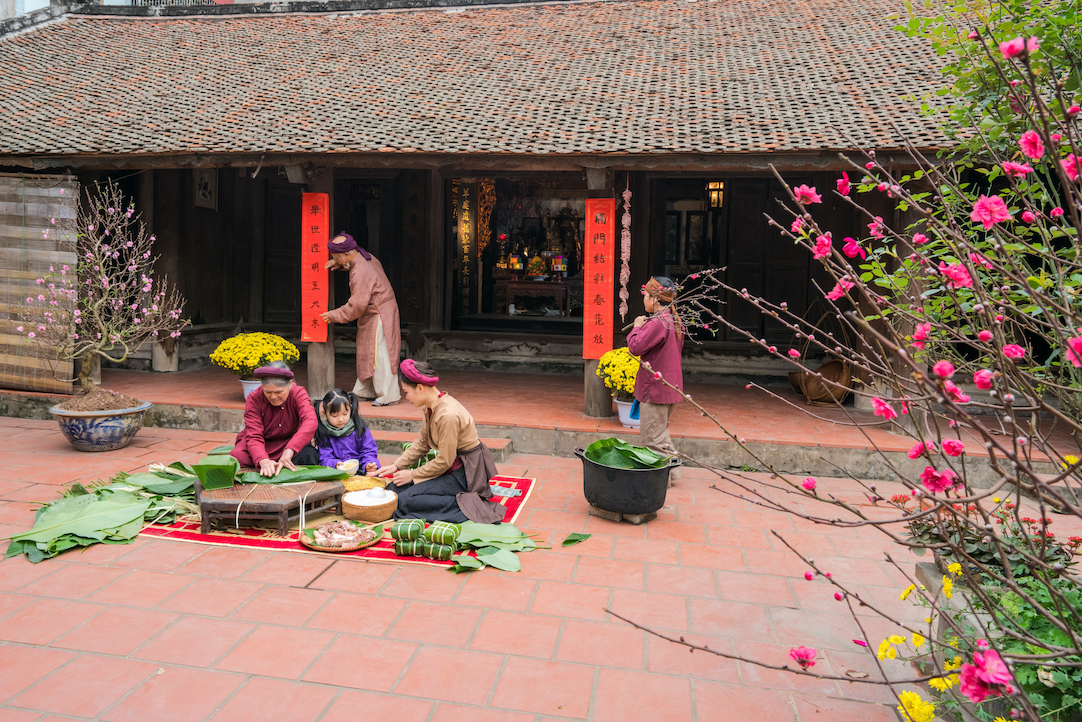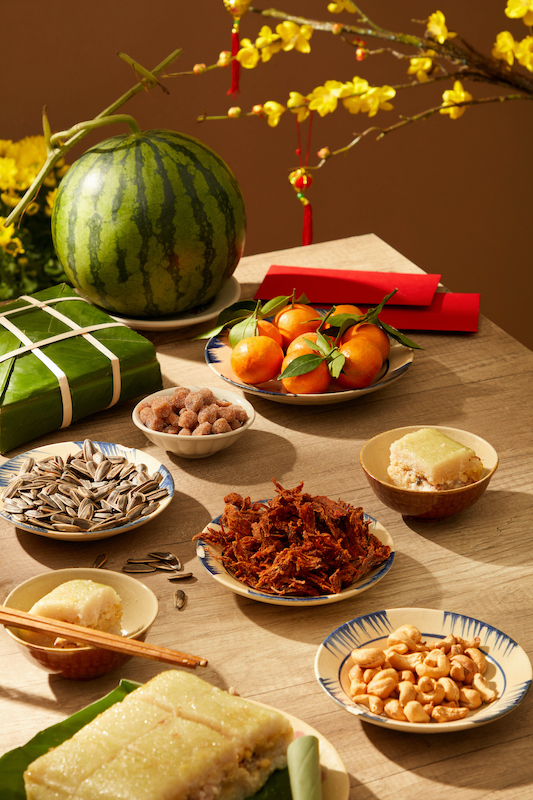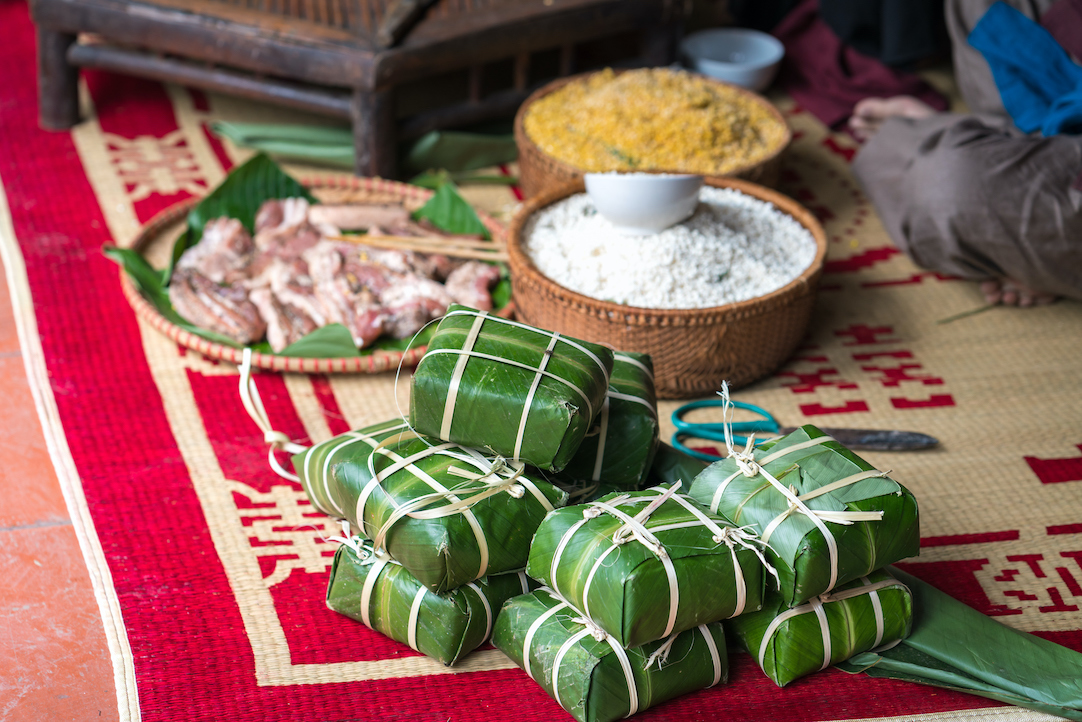
Tết Nguyên Đán is the most significant festival in Vietnam, deeply rooted in the nation’s culture, customs, and traditions.
Origins of Tết Nguyên Đán
According to historical records, the origins of Tết Nguyên Đán trace back to the reign of the Three Sovereigns and Five Emperors in ancient China, around 2879 BC. The festival has undergone numerous changes over time. Unlike the Western calendar, the Chinese of that era followed the lunar calendar, which is based on the moon’s cycles. Therefore, Tết Nguyên Đán is also determined by the lunar calendar.
Initially, the timing of Tết varied throughout different Chinese dynasties, as each dynasty chose a specific lunar month based on its symbolic color preferences. For example:
- The Xia Dynasty (nhà Hạ) favored black and celebrated Tết in the first lunar month (Dần).
- The Shang Dynasty (nhà Thương) preferred white and set the holiday in the twelfth lunar month (Sửu).
- The Zhou Dynasty (nhà Chu) designated the eleventh lunar month (Tý).
During the Eastern Zhou (Đông Chu) period, Confucius advocated returning to the first lunar month (Dần), while Qin Shi Huang (Tần Thuỷ Hoàng) set it in the tenth month (Hợi). It was not until the Han Dynasty (nhà Hán) in the 3rd century BC that Emperor Han Wu (Hán Vũ) officially standardized the celebration in the first lunar month, a tradition that continues today.
Vietnam’s Lunar New Year typically occurs later than the Gregorian New Year, falling between January 23 and February 19. According to Han Dynasty scholar Dongfang Shuo, the world’s creation followed a sequence where on the first day, the Creator made chickens, followed by dogs, pigs, goats, buffalo, horses, and finally humans on the seventh day. The eighth day was believed to mark the birth of rice. This corresponds to the first seven days of the new year, which is why Tết traditionally lasts from the 1st to the 7th of the first lunar month. However, in Vietnam, Tết is often extended: “The first lunar month is for celebrating Tết at home.”
Archaeologists in Vietnam have yet to reach a consensus on the exact origins of Tết Nguyên Đán. However, historical research suggests that during the chaotic Three Dynasties period, the Bai Yue people, scattered across southern China, migrated southward into what is now northern Vietnam. They brought with them Chinese New Year traditions, influencing the local culture. Some studies indicate that the Bai Yue originally celebrated the New Year in the eleventh lunar month (Tý) before aligning with the Han calendar’s first month (Dần). Therefore, while Vietnamese Tết shares similarities with the Chinese celebration and follows the lunar calendar, it remains a distinct tradition established and preserved by the Bai Yue and indigenous Vietnamese peoples. This challenges the notion that Tết was simply introduced by Chinese rule during the Northern Domination period.
The legend of Bánh Chưng and Bánh Dày (square and round rice cakes) suggests that Vietnamese people have been celebrating Tết since the time of the sixth Hung King (1712–1632 BC).
The Cultural and Spiritual Significance of Tết
Tết Nguyên Đán is more than just a cultural celebration; it holds deep spiritual meaning.
 Beyond marking the transition from one year to the next, Tết represents harmony between heaven, earth, humans, and deities. In Eastern philosophy, the word “Tết” originates from “Tiết” (season), which follows the universe’s cycle through the four seasons: spring, summer, autumn, and winter. In ancient agrarian society, farmers viewed Tết as an occasion to express gratitude to deities such as the Earth God, the Rain God, the Sun God, and the Thunder God—who ensured favorable weather and bountiful harvests.
Beyond marking the transition from one year to the next, Tết represents harmony between heaven, earth, humans, and deities. In Eastern philosophy, the word “Tết” originates from “Tiết” (season), which follows the universe’s cycle through the four seasons: spring, summer, autumn, and winter. In ancient agrarian society, farmers viewed Tết as an occasion to express gratitude to deities such as the Earth God, the Rain God, the Sun God, and the Thunder God—who ensured favorable weather and bountiful harvests.
Tết also symbolizes a fresh start, sweeping away the misfortunes of the past year and welcoming prosperity in the new one. This is why people visit temples and, for Catholics, attend New Year’s Eve Mass to give thanks to the Creator for past blessings and pray for good fortune, health, and peace in the coming year.
The holiday is also a time for mental renewal. In preparation, families clean and decorate their homes, leaving behind worries and misfortunes to embrace a hopeful, joyful, and prosperous new year.
Honoring Ancestors
In Vietnamese tradition, Tết is a time to pay respect to ancestors, parents, and elders. On the evening of the 30th lunar month or just before midnight, families light incense to invite their ancestors home for the New Year and seek their blessings for the year ahead. The ancestral altar is adorned with offerings, including a five-fruit tray, traditional dishes, and burning incense.
“The first day of Tết is for visiting fathers,
The third day is for teachers.”
This proverb highlights the Vietnamese values of filial piety and respect for teachers. Later, an extended version emerged:
“The first day is for fathers,
The second day is for mothers,
The third day is for teachers.”
While some argue this arrangement is meant to distinguish between paternal and maternal sides of the family, others believe it creates unnecessary division. Historical research by scholars Phan Kế Bính, Toan Ánh, and Nhất Thanh does not mention a specific Tết for mothers or separate traditions for maternal relatives.
Above all, Tết is a time for family reunions. It’s an occasion for those who have been away from home to return, sit by the fire, cook bánh chưng, and cherish time with loved ones.
“No matter where one does business,
They must return home for Tết.”
Traditional Tết Customs in Vietnam
Tết Nguyên Đán is a nationwide festival, deeply intertwined with Vietnamese culture. Without its unique customs, Tết would lose its distinct charm.
1. Visiting and Cleaning Ancestors’ Graves
Before the new year begins, families visit ancestral graves, cleaning and decorating them to show respect. This tradition invites ancestors to celebrate Tết with their descendants and seek their blessings for good fortune.
2. Raising the Cây Nêu (New Year’s Bamboo Pole)
Legend has it that evil spirits roam freely during the New Year, so people place a tall bamboo pole (Cây Nêu) outside their homes to ward off misfortune. The pole is often decorated with paper charms, good luck symbols, and lanterns to guide ancestors’ home for the celebration.
3. Cooking Bánh Chưng and Bánh Tét
“Fatty pork, pickled onions, red calligraphy,
Firecrackers, bamboo poles, and green bánh chưng.”

Tết is incomplete without bánh chưng (square rice cakes) in the North and bánh tét (cylindrical rice cakes) in the South. Families gather to prepare these cakes, symbolizing gratitude and prosperity. The process strengthens family bonds as children eagerly stay up late to watch the cakes cook.
4. Preparing the Five-Fruit Tray
The mâm ngũ quả (five-fruit tray) is a sacred offering to ancestors. Its composition varies by region:
- In the North, it follows the Five Elements (Metal, Wood, Water, Fire, Earth) and includes bananas, pomelos, Buddha’s hand fruit, figs, and persimmons.
- In the Central region, it often includes custard apples, coconuts, figs, papayas, and mangoes.
- In the South, the selection is guided by a phrase meaning prosperity: “Cầu (sugar apple or cherimoya), Dừa (coconut), Đủ (papaya), Xoài (mango), Sung (fig).”
5. Worshiping the Kitchen Gods (Ông Công, Ông Táo)
On the 23rd day of the last lunar month, families send off the Kitchen Gods to heaven by offering paper hats, robes, and carp (real or symbolic paper ones), as they report on household affairs to the Jade Emperor.
6. Year-End Offerings and New Year’s Eve Rituals
On the final night of the year, families hold a feast to bid farewell to the past year and welcome a prosperous new one.
7. First Visitor of the Year (Xông Đất)
The first person to enter a home in the new year is believed to set the family’s fortune for the year ahead.
8. New Year’s Greetings and Lì Xì (Lucky Money)
Tết is everyone’s shared birthday, marked by joyful greetings and red envelopes filled with lucky money, symbolizing blessings for health, wisdom, and success.
-Trần Mỹ Duyệt, Ph.D-
References:
- Traditional Tết Customs – hanu.edu.vn
- Tết Nguyên Đán – Wikipedia
